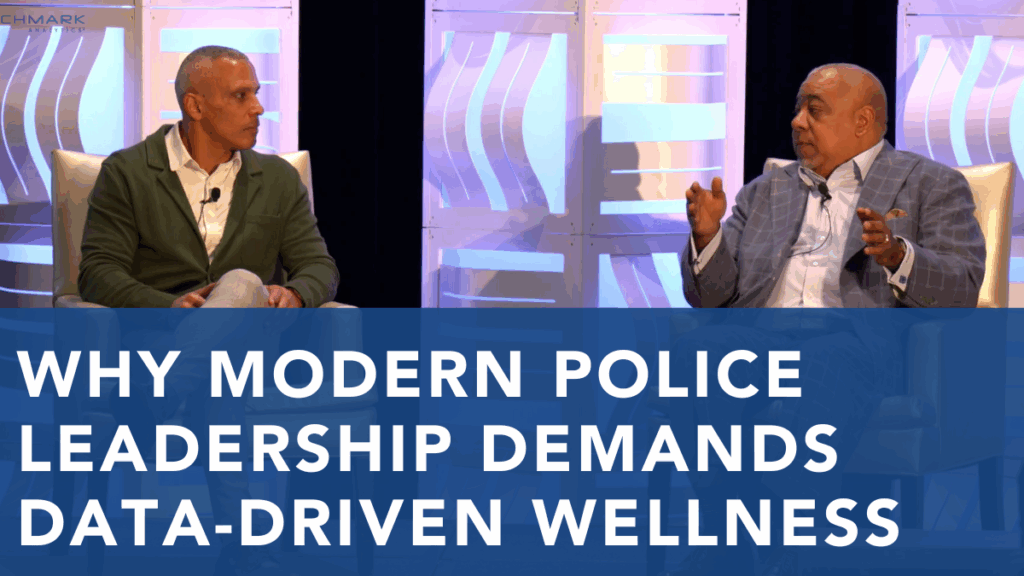New Tactics for Law Enforcement Recruitment
Posted
August 12, 2021
Share:
Law enforcement agency officers and leaders know that recruiting new police officers is an urgent need. According to Pew Research’s comprehensive Behind the Badge study, 86% of officers said their agency did not have enough officers to adequately police their community. That figure grew to 95% for officers serving in departments with more than 500 sworn personnel. Agencies across the country are seeing officers leave the profession for a number of reasons at a faster rate than they are being replaced — leading to an “all-hands-on-deck” approach from researchers, industry groups, and most importantly law enforcement leaders, to identify tactics to reverse this trend. In this article, we’ll explore some of the challenges currently being experienced in law enforcement recruitment as well as what agencies and their leaders are doing to address this trend.
A recent survey on workforce trends from the Police Executive Research Forum (PERF) paints a picture that speaks to the weight of the current situation. The topline of this report shows that only 93% of departments have filled all their authorized positions in the 2020-2021 survey period. Perhaps more troubling to agency leaders is the rate at which officers are exiting the profession — with a 45% increase in retirement rate across departments of all sizes and an 18% increase in resignations. These numbers are especially dramatic in larger departments (500+ sworn officers) where hiring has fallen by 36% during this period. While there are a variety of factors influencing these trends that we’ll cover in a later article, the fact persists that more officers are currently leaving the profession than entering it. With this in mind, agency leaders and officers alike recognize the need to ramp up police officer recruitment to meet this challenge.
Only 93% of departments have the officers they need
+45% increase in retirements across agencies
-36% reduction in officers hired in 500+ sworn agencies
Statistics from PERF Workforce Trends Report 2020-2021
The need for more officers is clear and leaders of agencies throughout the country are taking bold steps to boost law enforcement recruitment numbers. These are just a few of the forward-thinking tactics that leaders in the profession are using to drive the change needed to maintain and strengthen their agencies.
Promoting a positive agency culture
Reform efforts are changing the policing landscape at a faster rate than many in the profession have seen during their careers. An open and transparent culture is something that community members and new recruits want from a department. Look for recruits that will not only contribute to this culture but enhance it with diverse experiences and cultural backgrounds.

Moving with purpose
Labor shortages are affecting just about every corner of the country’s economy right now. Hiring for government positions can take longer than in the private sector. Many candidates are job-shopping and pursuing multiple opportunities. Moving them through the hiring process increases a recruiting agency’s chances of success. On the flip side, don’t move too quickly or avoid doing due diligence on background checks.
Relaxing but not removing hiring standards
It used to be that physical characteristics like visible tattoos, facial hair were non-starters when recruiting in some departments. Many agencies have, when dealing with otherwise very highly qualified candidates, loosened such standards to reflect changing societal norms.
Striving for diversity
Some of the most demonstrably effective recruiting campaigns have involved reaching out to communities that have not historically been well-represented in policing. Over the last year, the NYPD engaged in a recruiting drive in traditionally minority areas of the city using the slogan “Be the Change” and waived the typical test fee for recruits. This netted the department an 11.4% increase in black applicants compared to the previous five years.
Commissioner Shea said that attracting a diverse pool of candidates was “incredibly important” for the NYPD and “…[a] priority from day one” Wall Street Journal, May 18, 2021
Rethinking the old ways
Policing is a profession that values its tradition. For an older generation of officers, overtime was seen as a desirable way to boost take-home pay. There is plenty of evidence to show excessive overtime and inconsistent shifts lead to burnout. Furthermore, the new generation of recruits (and workers in general) place a greater emphasis on work-life balance. Allowing for some flexibility in scheduling and mandatory overtime goes a long way to making the profession more appealing to millennials and younger generations just entering the workforce.
A different kind of academy
Many departments are redoubling their efforts to attract potential recruits from colleges or universities via internships. Moving beyond the notion of interns as a source of inexpensive labor, agencies that look at internships as a recruiting tool allow potential recruits to experience more facets of the profession than a simple ride-along could hope to achieve. Taking a page from the private sector and military, some agencies are offering stipends or scholarships to interested students in exchange for a commitment to pursue policing as a profession, usually with the agency in question.
Recruitment from within
It is common in the tech world for companies to offer bonuses or “finder’s fees” for successful referrals in high-demand positions. This is a tactic that agencies are using, whether it be cash bonuses or extra time off, to attract “pre-vetted” candidates. Along these same lines, putting highly qualified and motivated officers on a leadership track increases retention rates as well as demonstrates to potential recruits that the agency is committed to opportunities for career advancement.
Law Enforcement Recruitment in the 21st Century
Owing to generational shifts and several other factors, retirements and officer resignations have increased to a level that merits serious study and evaluation. While there is no one-size-fits-all approach to recruitment, it is the leaders of agencies that are driving true innovation in police recruitment methodology – discarding practices shown to be ineffective and, instead, employing new tactics to increase their ranks with high-quality applicants. By using the available data and research as well as sharing information through industry groups and gatherings, law enforcement leaders are redefining officer recruitment and building the agencies of the 21st century.
A research-driven data-management suite like Benchmark Management System®, First Sign® Early Intervention, and Case Action Response Engine® enable leaders to make well-informed personnel decisions by collating multiple data streams to produce a holistic view of an officer’s performance as well as highlighting areas of opportunity in coaching and supplementary training for those officers who could benefit from it.
Aside from being helpful in day-to-day operations, comprehensive data analysis tools aid leaders in managing their force strategically by allowing them to bring officers who exemplify departmental culture and performance into positions of influence within the organization. This helps not only with internal issues such as officer retention but also in outward-facing community relations and recruitment efforts.
Related Posts
Ready to Experience the Benchmark Difference?
Benchmark Analytics and its powerful suite of solutions can help you turn your agency’s challenges into opportunities. Get in touch with our expert team today.



